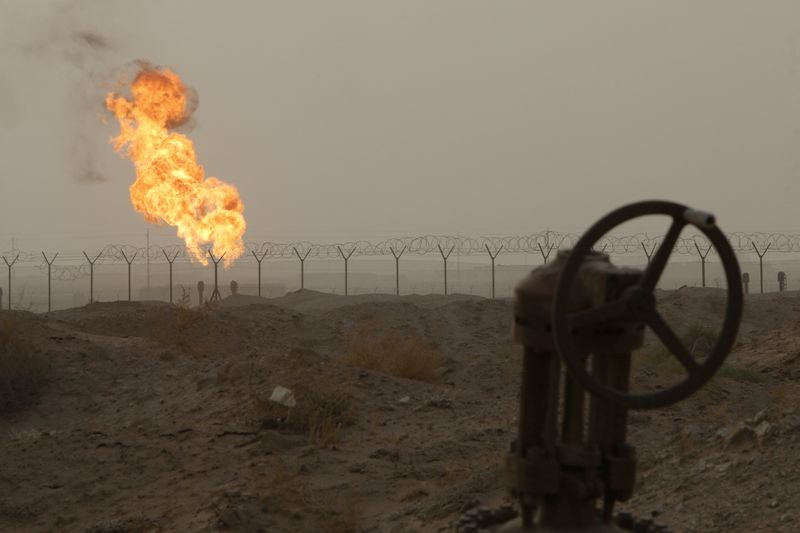Commodities
Oil prices steady, supported by Middle East supply fears

By Ahmad Ghaddar and Arunima Kumar
LONDON (Reuters) -Oil prices pared gains in volatile trade on Tuesday as fears of an escalation in the Middle East conflict and a drop in production at Libya’s largest oilfield raised the prospect of tight supplies.
However, buying was capped by a weak demand outlook in China, while a global market recovery from a sell-off on Monday provided support.
futures were down 9 cents, or 0.12%, to $76.21 a barrel at 1135 GMT, while U.S. West Texas Intermediate crude futures were down 8 cents, or 0.11%, to $72.86. Both contracts gained over $1 a barrel earlier in the session.
“Despite a rebound in the early session driven by concerns over supply disruptions and rising tensions in the Middle East, futures could continue their downtrend as market reactions to disappointing U.S. job growth data and weak economic signals from China created a wave of negative sentiment,” said Hani Abuagla, senior market analyst at XTB MENA.
On Monday, both benchmarks fell about 1% as U.S. recession worries hammered global stock markets.
Oil prices are finding a floor as concern mounts that Iran, a major Middle Eastern producer, may retaliate against Israel and the U.S. following the assassination of a Hamas leader in Tehran and an Israeli attack that killed a Hezbollah commander in Lebanon, potentially leading to a wider regional war.
On Monday, at least five U.S. personnel were injured in an attack against a military base in Iraq, U.S. officials told Reuters. It was unclear whether the attack was linked to the retaliation threats.
At the same time, weak demand figures, particularly in China, have limited any oil market rallies.
” () long-awaited seasonal upturn in demand in Q3 seems to be disappointing. Use of on-road fuels like gasoline and diesel is coming below initial bullish expectations,” Onyx Capital Group analyst Harry Tchilinguirian said.
Oil giant Saudi Aramco (TADAWUL:) on Tuesday also reported a 3.4% fall in second-quarter profit on lower crude volumes and softer refining margins.
CEO Amin Nasser said Aramco was seeing significant growth in China and added that the fundamentals do not support a drop in oil prices.
In the U.S., the world’s biggest oil consumer, data on Monday showed the service sector recovered from a four-year low in July.
A broader rally in Asian equity markets overnight, after they plunged on Monday, also supported the oil market.

Lower production at Libya’s 300,000 barrel-per-day Sharara oilfield buoyed prices further.
Libya’s National Oil Corp said on Tuesday it would start to gradually decrease production at the field due to protests.
Commodities
Oil prices rise; U.S. crude inventories plunge, Russia-Ukraine truce eyed
Commodities
India’s Reliance to stop buying Venezuelan oil over US tariffs, sources say
Commodities
Oil prices climb on Venezuela supply worries

 Forex3 years ago
Forex3 years agoForex Today: the dollar is gaining strength amid gloomy sentiment at the start of the Fed’s week

 Forex3 years ago
Forex3 years agoUnbiased review of Pocket Option broker

 Forex3 years ago
Forex3 years agoDollar to pound sterling exchange rate today: Pound plummeted to its lowest since 1985

 Forex3 years ago
Forex3 years agoHow is the Australian dollar doing today?

 Cryptocurrency3 years ago
Cryptocurrency3 years agoWhat happened in the crypto market – current events today

 World3 years ago
World3 years agoWhy are modern video games an art form?

 Commodities3 years ago
Commodities3 years agoCopper continues to fall in price on expectations of lower demand in China

 Economy3 years ago
Economy3 years agoCrude oil tankers double in price due to EU anti-Russian sanctions























